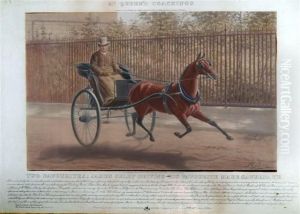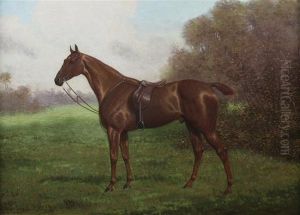John Alex. Harington Bird Paintings
John Alexander Harington Bird was an accomplished British artist born in 1846 and passed away in 1936. Bird's life and work spanned across the late Victorian era into the early 20th century, a period marked by significant transformations in the art world, including the emergence of modernism. Despite these changes, Bird remained dedicated to the traditional approaches to art, focusing primarily on landscapes and marine subjects which were popular among the Victorian public and collectors.
Bird's early life was rooted in an environment that encouraged his artistic talents. Although there was limited information about his formal education in art, it is known that he was active in artistic circles from a young age, developing a style that was influenced by the prevailing trends of his time. His work often depicted the British countryside and coast, capturing the essence of rural and maritime Britain with a keen eye for detail and a profound appreciation for the natural world.
Throughout his career, Bird exhibited his work at various prestigious venues, including the Royal Academy and the Royal Society of British Artists, a testament to his skill and popularity as an artist. His paintings were celebrated for their meticulous detail, vibrant colors, and the ability to evoke the atmosphere of the scenes he depicted. Bird's commitment to realism and his skillful handling of light and shadow won him admiration and respect among his contemporaries.
Despite the shift towards modernist sensibilities in the art world during his lifetime, Bird's work remained rooted in the representational tradition. He did not venture far into the experimental techniques and abstract themes that characterized the work of many of his contemporaries. Instead, he focused on mastering the traditional methods, which continued to appeal to a segment of the art market that was nostalgic for the landscapes and seascapes of Britain.
John Alexander Harington Bird's legacy as an artist is marked by his dedication to the beauty of the natural world and his mastery of traditional painting techniques. His works continue to be appreciated for their technical skill and evocative power, capturing a timeless beauty that transcends the era in which they were created. Bird's contributions to British art remain significant, as his paintings offer a window into the pastoral and maritime scenes that were so cherished during his lifetime.






